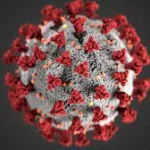Porto, Portugal – People suffering from allergy-induced sniffles and asthma may have distinct fungal colonies, or mycobiomes, in their noses, according to a study published Tuesday. The research sheds new light on the potential role of fungi in respiratory diseases like allergic rhinitis and asthma.
Allergic rhinitis, commonly referred to as hay fever, is a widespread respiratory condition characterized by sneezing, itching, nasal inflammation, and a blocked or runny nose. The condition is often associated with asthma, which involves inflamed and obstructed airways.
A team of researchers from the University of Porto found that individuals with allergic rhinitis or asthma exhibited significantly different nasal fungal profiles compared to healthy individuals. “We showed that allergic rhinitis samples displayed a significantly higher fungal diversity and a different fungal community structure compared to those of healthy controls,” said Dr. Luís Delgado, the study’s lead researcher.
The study, published in Frontiers in Microbiology, suggests that allergic rhinitis alters the diversity and composition of the nasal mycobiome, potentially influencing respiratory health.
Study Highlights Nasal Fungal Diversity
To investigate the nasal mycobiome, the researchers analyzed 306 nasal swab samples from 214 participants, including children and young adults attending an immunology and asthma clinic in Porto. The participants were divided into groups: 155 had both allergic rhinitis and asthma, 47 had allergic rhinitis alone, and 12 had asthma alone. Additionally, 125 healthy individuals served as controls.
Using DNA sequencing, the team identified two dominant fungal families—Ascomycota and Basidiomycota—across all samples. Within these families, 14 fungal genera were found to dominate the nasal mycobiomes.
“Among these dominant genera, we detected common fungi that are recognized as allergenic or opportunistic pathogenic fungi,” Dr. Delgado explained. “This suggests that the nasal cavity is a major reservoir for fungi that could be involved in allergic rhinitis and asthma.”
Immune Implications of Fungal Communities
The findings revealed a stark contrast between the nasal fungi of healthy participants and those with respiratory conditions. Patients with both allergic rhinitis and asthma exhibited a more interconnected fungal network compared to those with just one condition or none.
This interconnectedness may influence the immune environment of the nose, potentially contributing to the development or exacerbation of respiratory symptoms.
The study emphasizes the need for further research into the role of fungi in respiratory diseases. Understanding the composition and impact of nasal mycobiomes could lead to more targeted treatments for conditions like allergic rhinitis and asthma.
“This work highlights the complexity of the upper airway’s microbiome and its potential role in respiratory health,” Dr. Delgado said.
With respiratory diseases affecting millions worldwide, the study offers valuable insights into how microscopic organisms could play a larger role in human health than previously understood.











